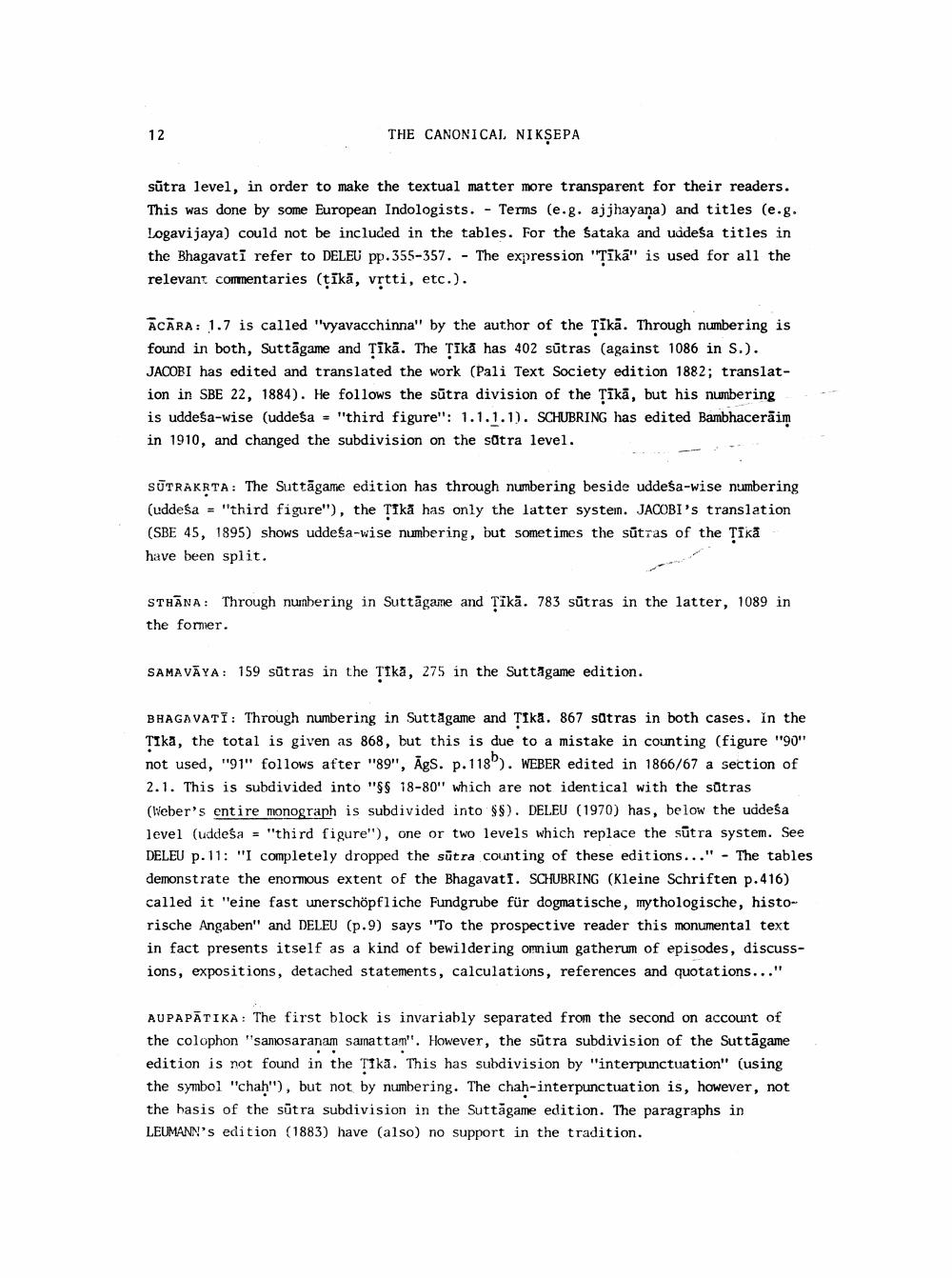________________
12
THE CANONICAL NIKSEPA
sutra level, in order to make the textual matter more transparent for their readers. This was done by some European Indologists. Terms (e.g. ajjhayana) and titles (e.g. Logavijaya) could not be included in the tables. For the ŝataka and uddeŝa titles in the Bhagavati refer to DELEU pp.355-357. The expression "Tīkā" is used for all the relevant commentaries (ṭīkā, vṛtti, etc.).
ACARA: 1.7 is called "vyavacchinna" by the author of the Tīkā. Through numbering is found in both, Suttāgame and Tikā. The Ṭīkā has 402 sūtras (against 1086 in S.). JACOBI has edited and translated the work (Pali Text Society edition 1882; translation in SBE 22, 1884). He follows the sutra division of the Țīkā, but his numbering is uddeŝa-wise (uddeŝa = "third figure": 1.1.1.1). SCHUBRING has edited Bambhaceraim in 1910, and changed the subdivision on the sutra level.
SUTRAKṚTA: The Suttagame edition has through numbering beside uddeŝa-wise numbering (uddeŝa = "third figure"), the Tika has only the latter system. JACOBI's translation (SBE 45, 1895) shows uddeŝa-wise numbering, but sometimes the sūtras of the Ṭīkā have been split.
STHANA: Through numbering in Suttāgame and Tikā. 783 sūtras in the latter, 1089 in the former.
SAMAVAYA: 159 sūtras in the Țikā, 275 in the Suttagame edition.
BHAGAVATI: Through numbering in Suttagame and Tika. 867 satras in both cases. In the Tika, the total is given as 868, but this is due to a mistake in counting (figure "90" not used, "91" follows after "89", AgS. p.118). WEBER edited in 1866/67 a section of 2.1. This is subdivided into "S$ 18-80" which are not identical with the sutras (Weber's entire monograph is subdivided into $$). DELEU (1970) has, below the uddeŝa level (uddeŝa = "third figure"), one or two levels which replace the sutra system. See DELEU p.11: "I completely dropped the sutra counting of these editions..." - The tables demonstrate the enormous extent of the Bhagavati. SCHUBRING (Kleine Schriften p.416) called it "eine fast unerschöpfliche Fundgrube für dogmatische, mythologische, historische Angaben" and DELEU (p.9) says "To the prospective reader this monumental text in fact presents itself as a kind of bewildering omnium gatherum of episodes, discussions, expositions, detached statements, calculations, references and quotations..."
AUPAPATIKA: The first block is invariably separated from the second on account of the colophon "samosaranam samattam'". However, the sutra subdivision of the Suttagame edition is not found in the Tika. This has subdivision by "interpunctuation" (using the symbol "chah"), but not by numbering. The chah-interpunctuation is, however, not the basis of the sutra subdivision in the Suttagame edition. The paragraphs in LEUMANN's edition (1883) have (also) no support in the tradition.




